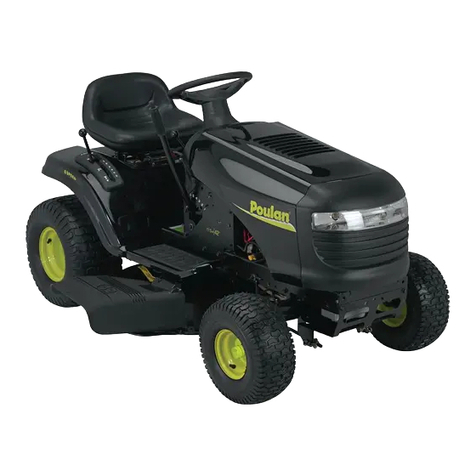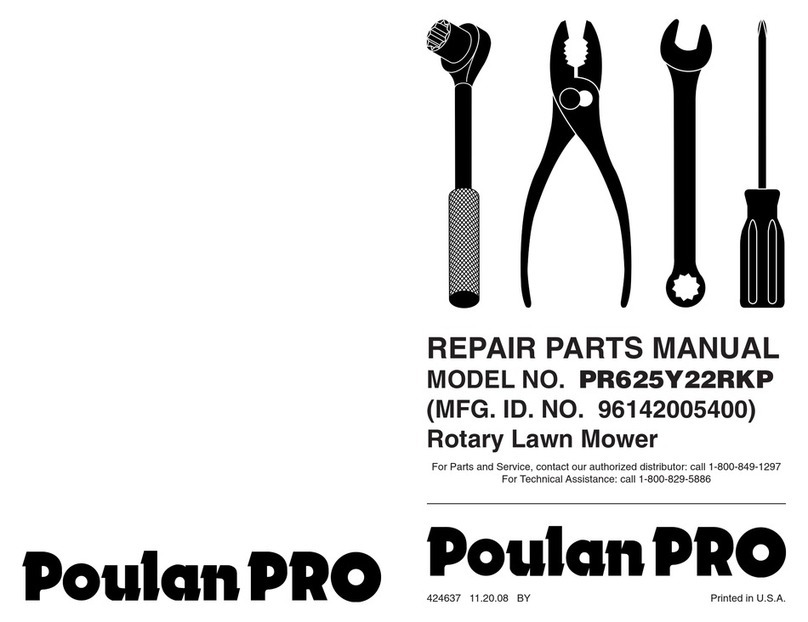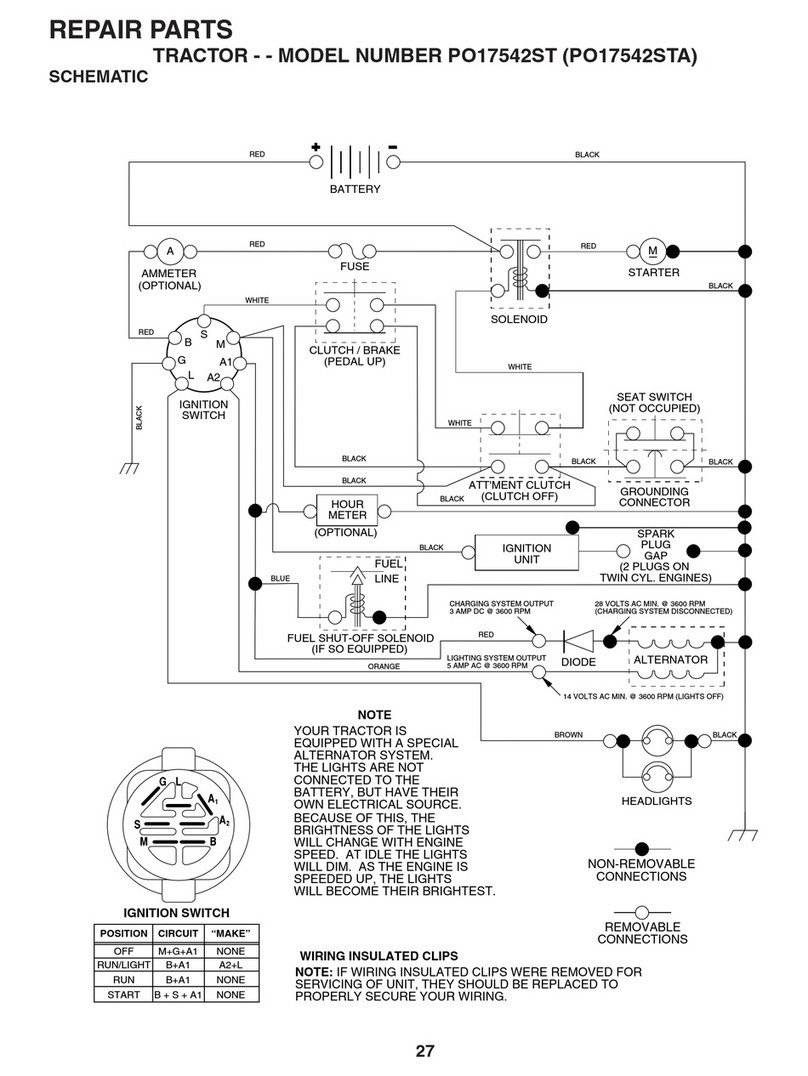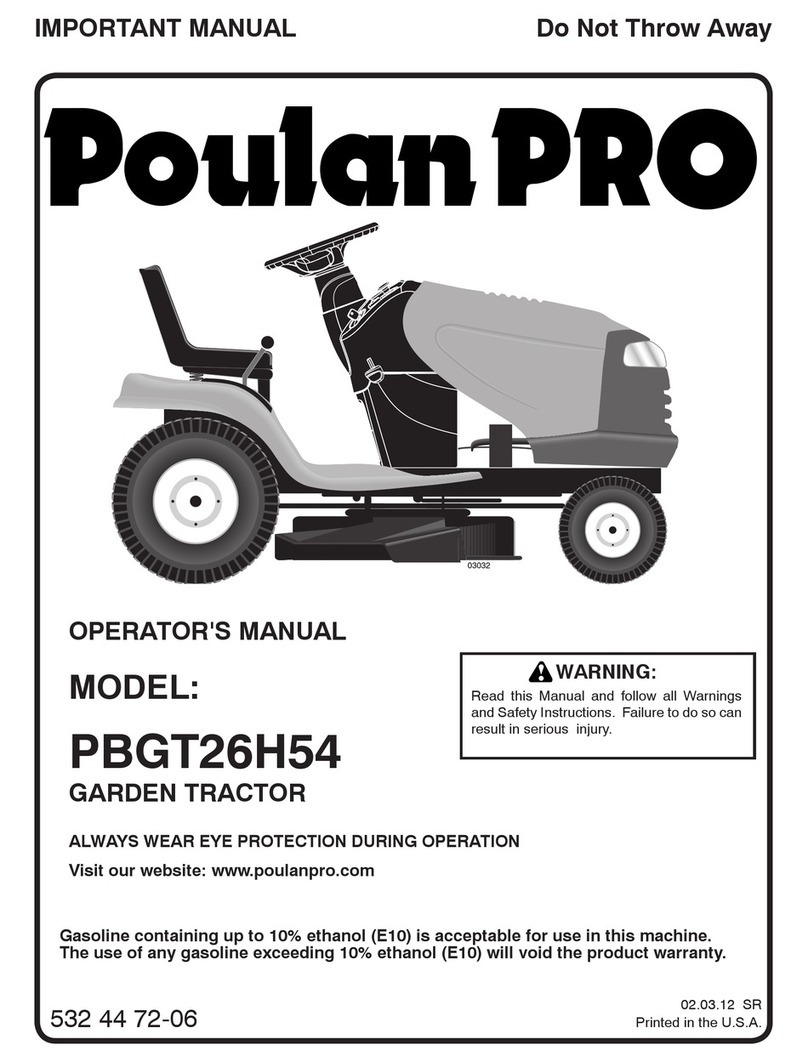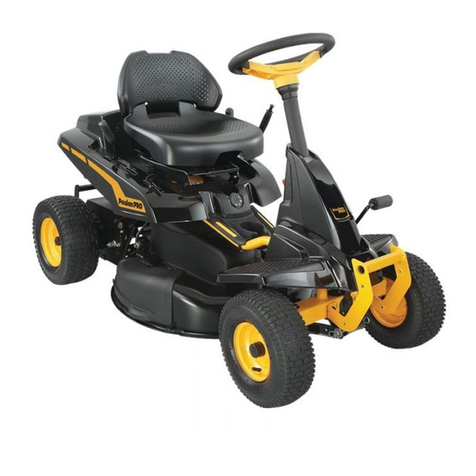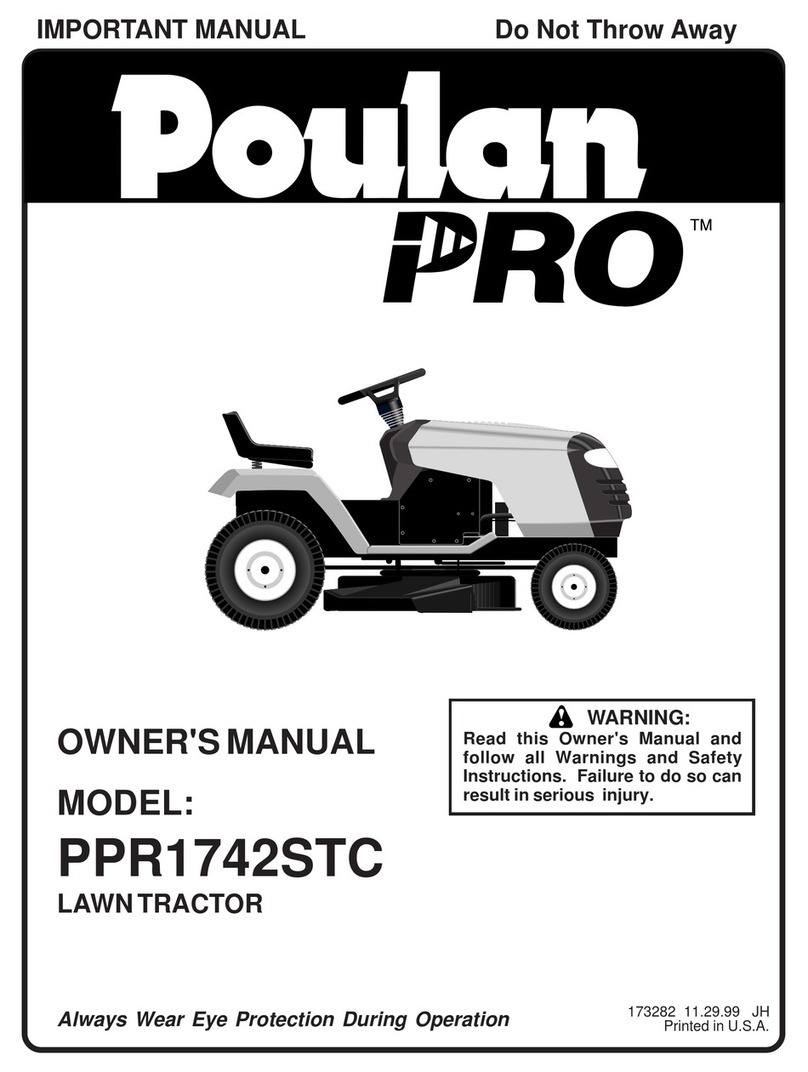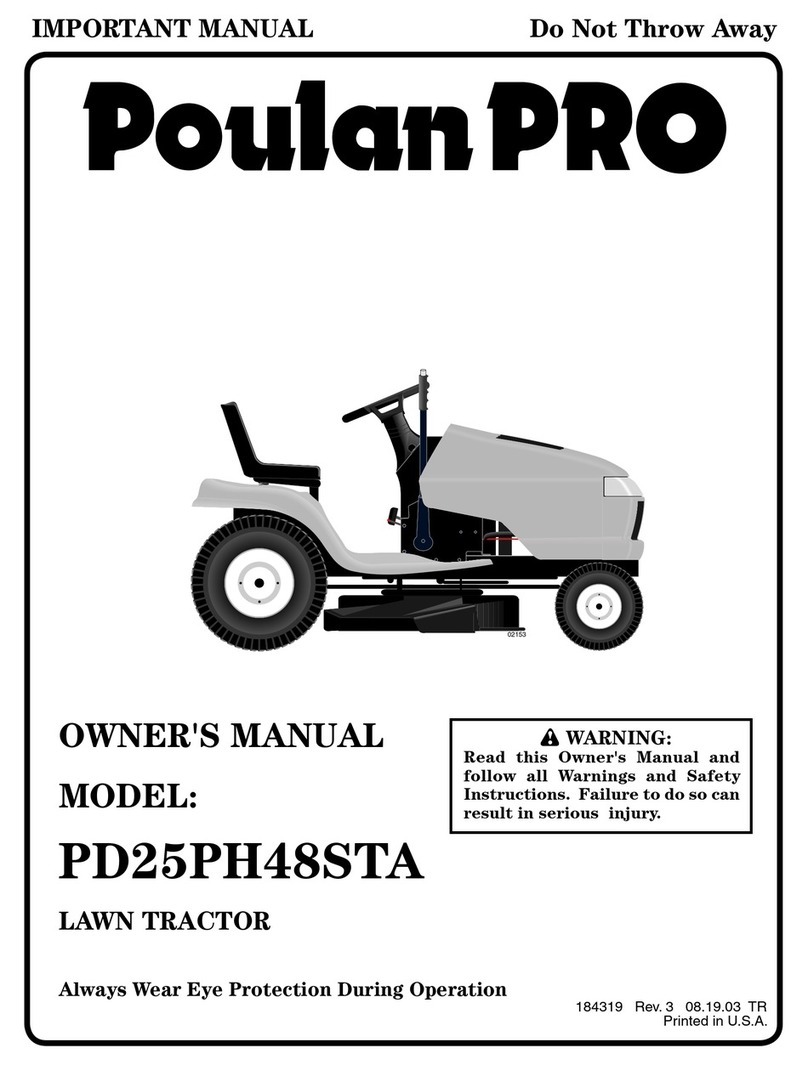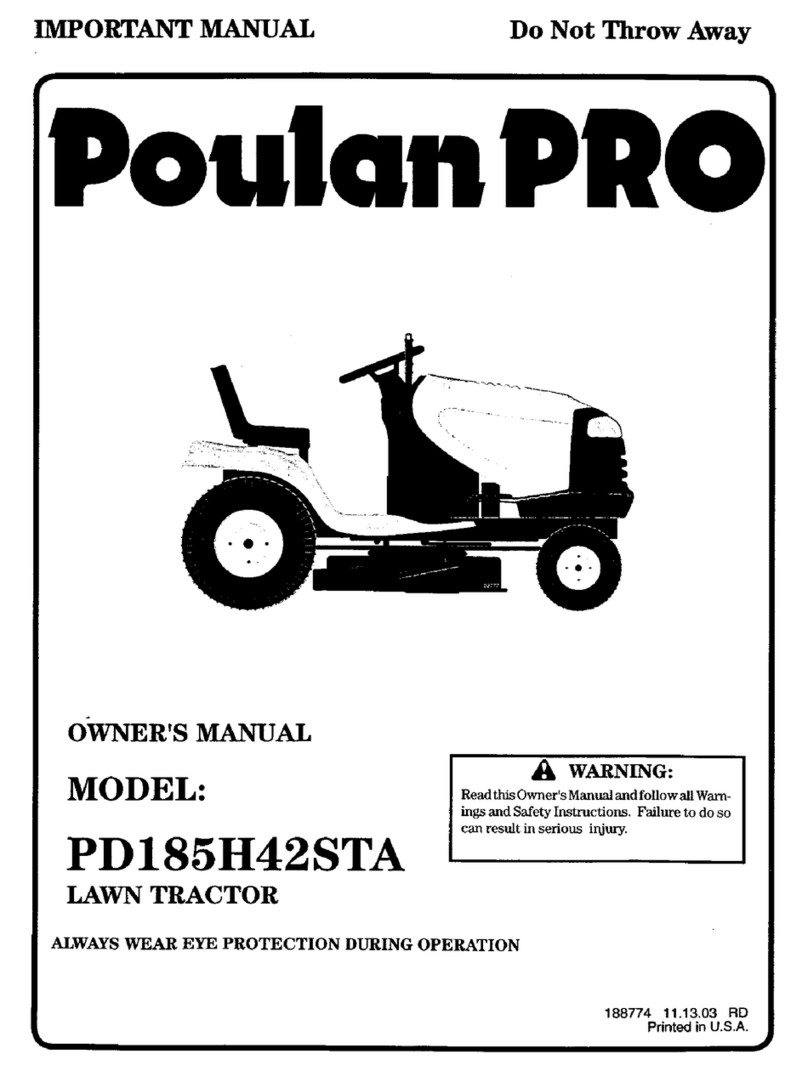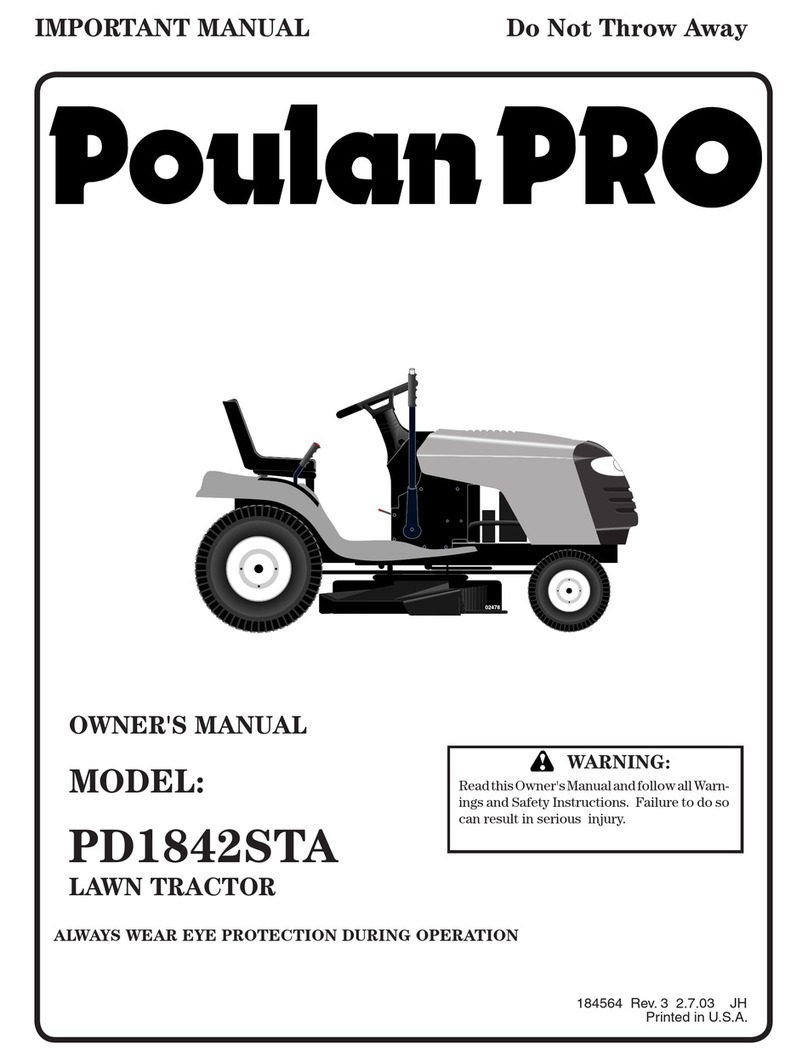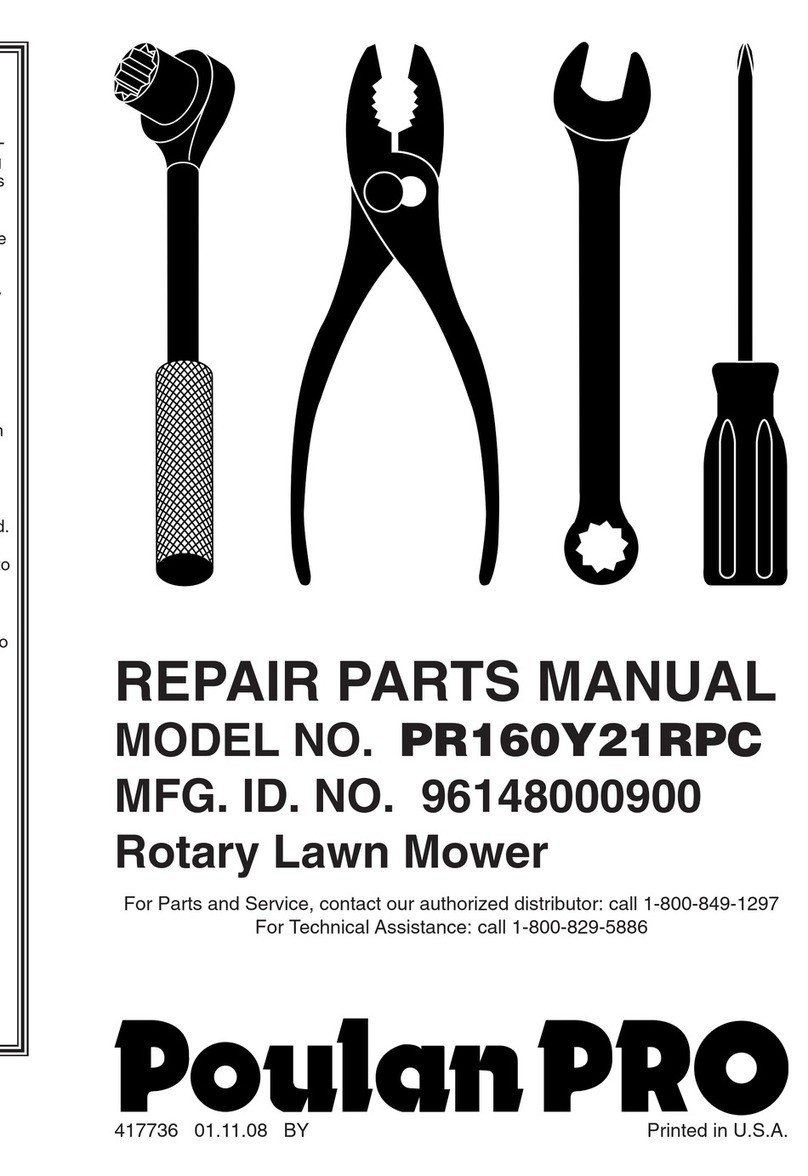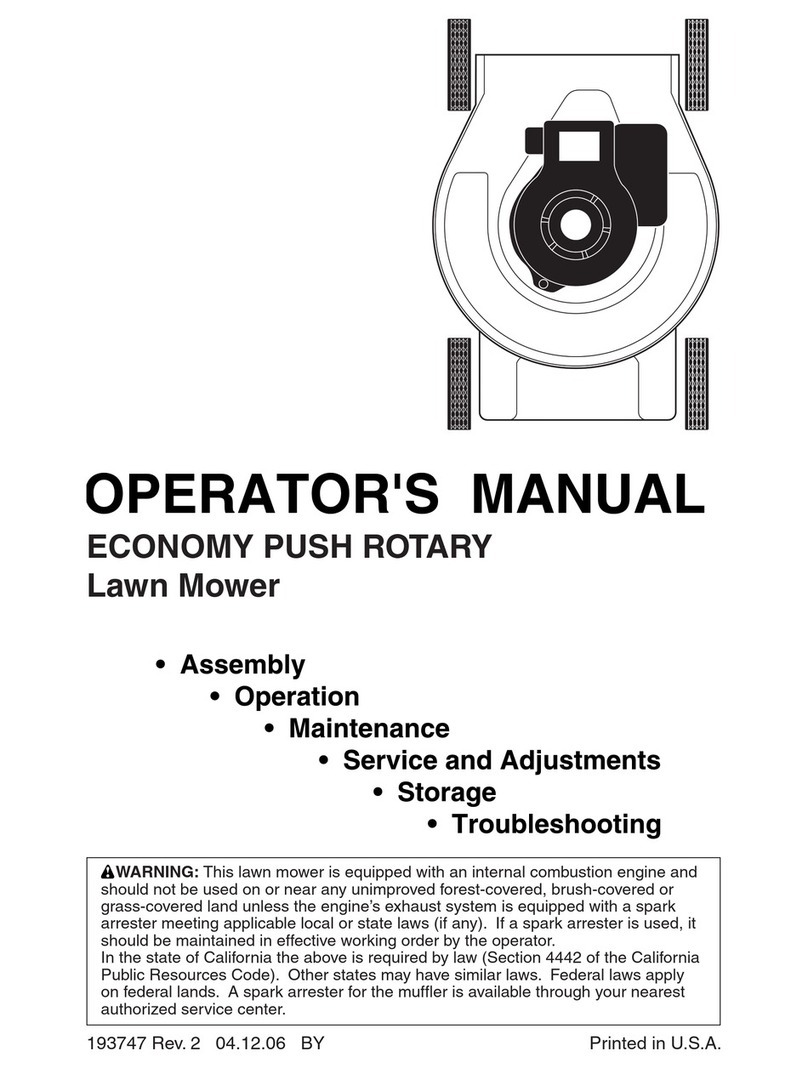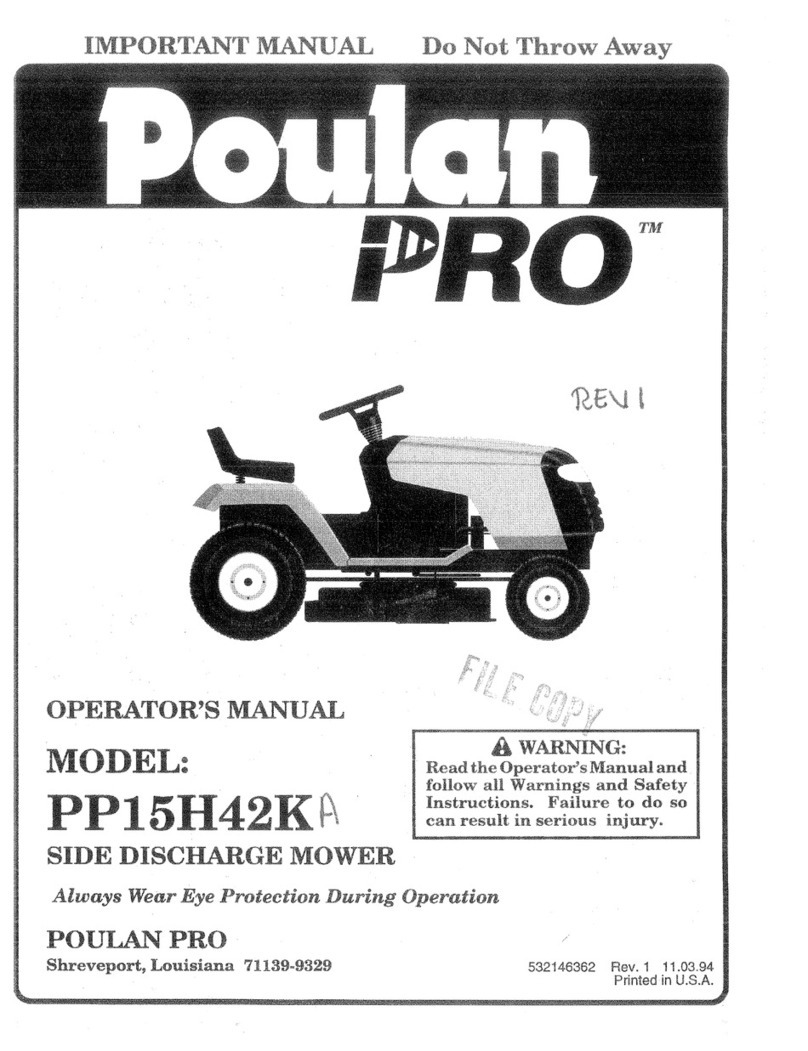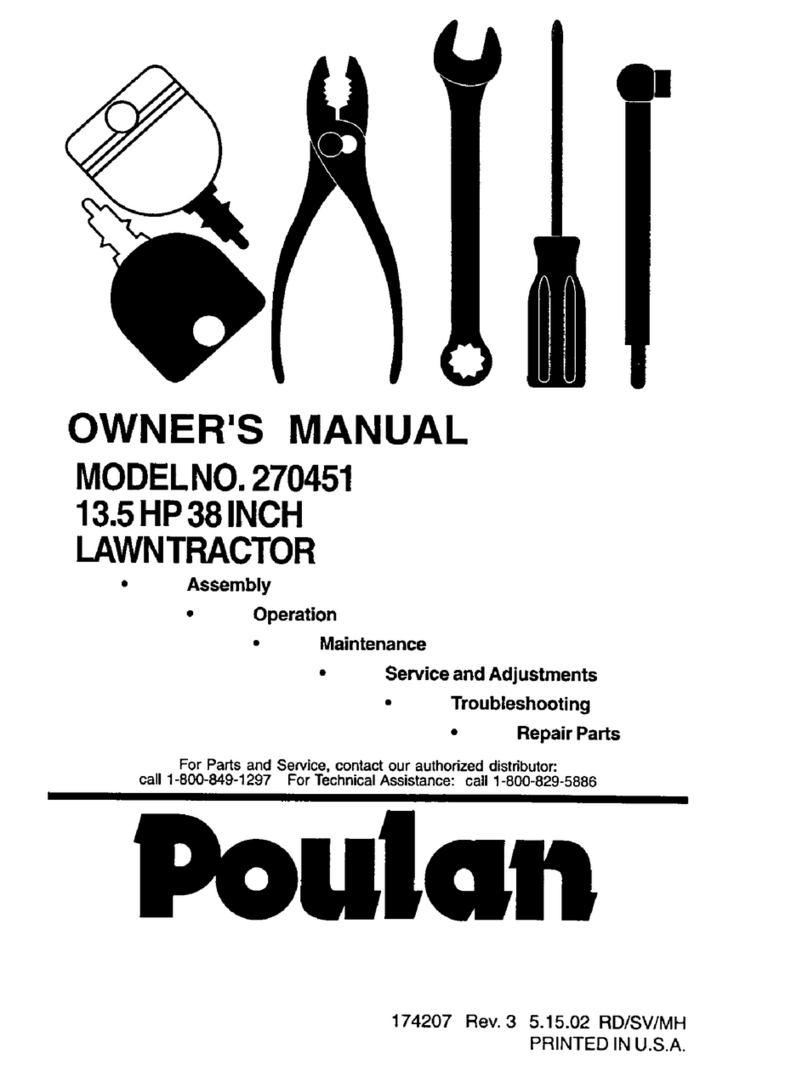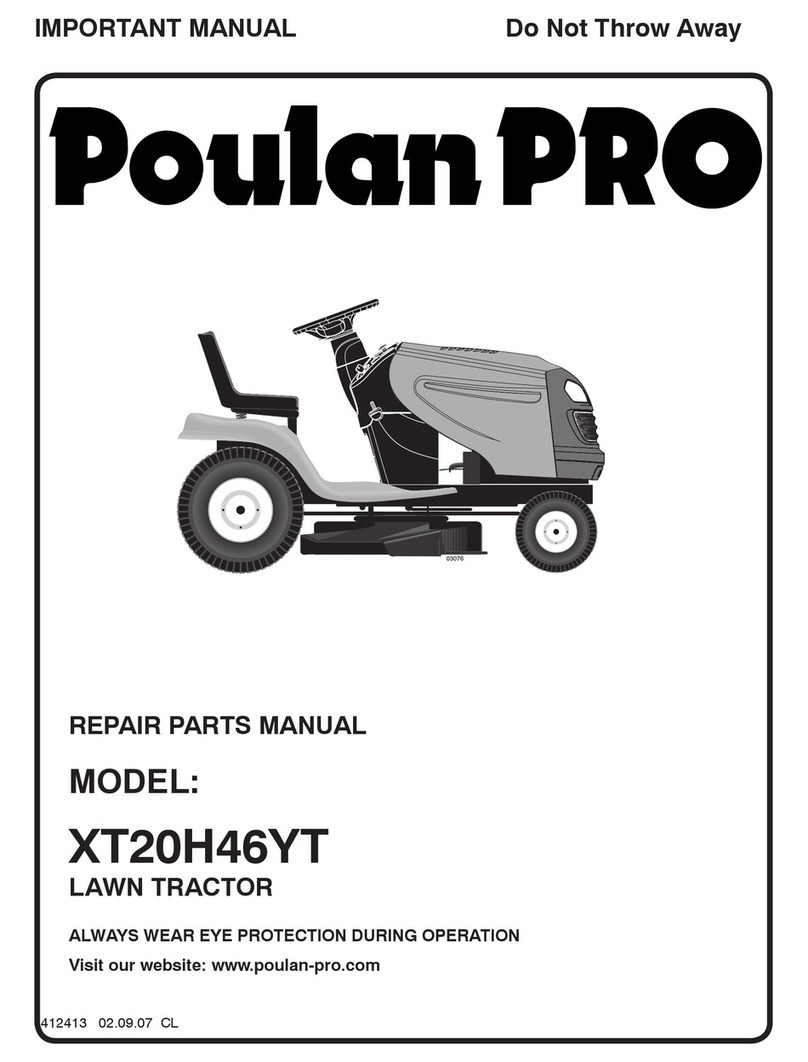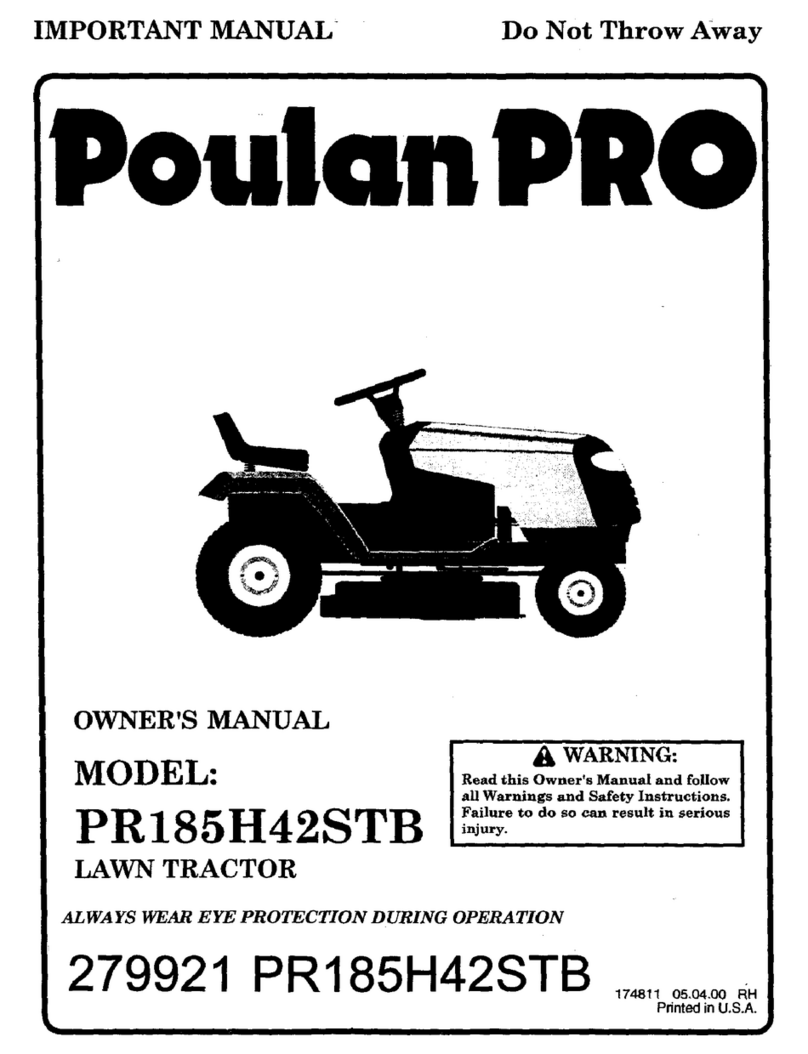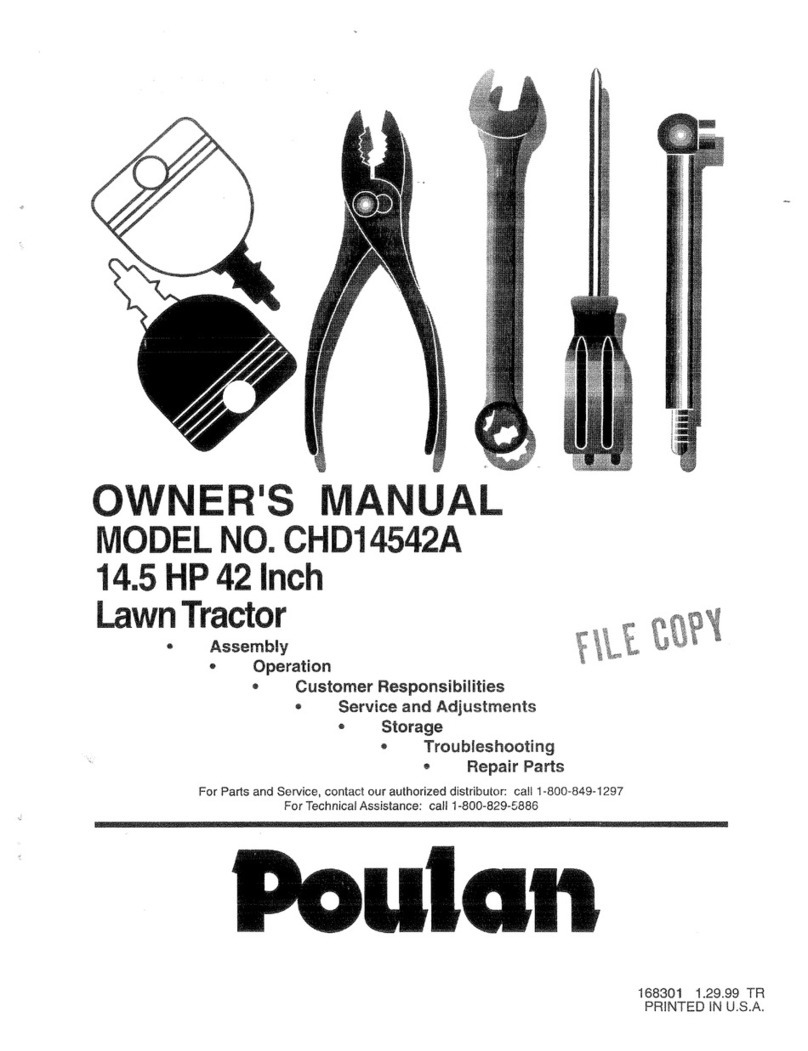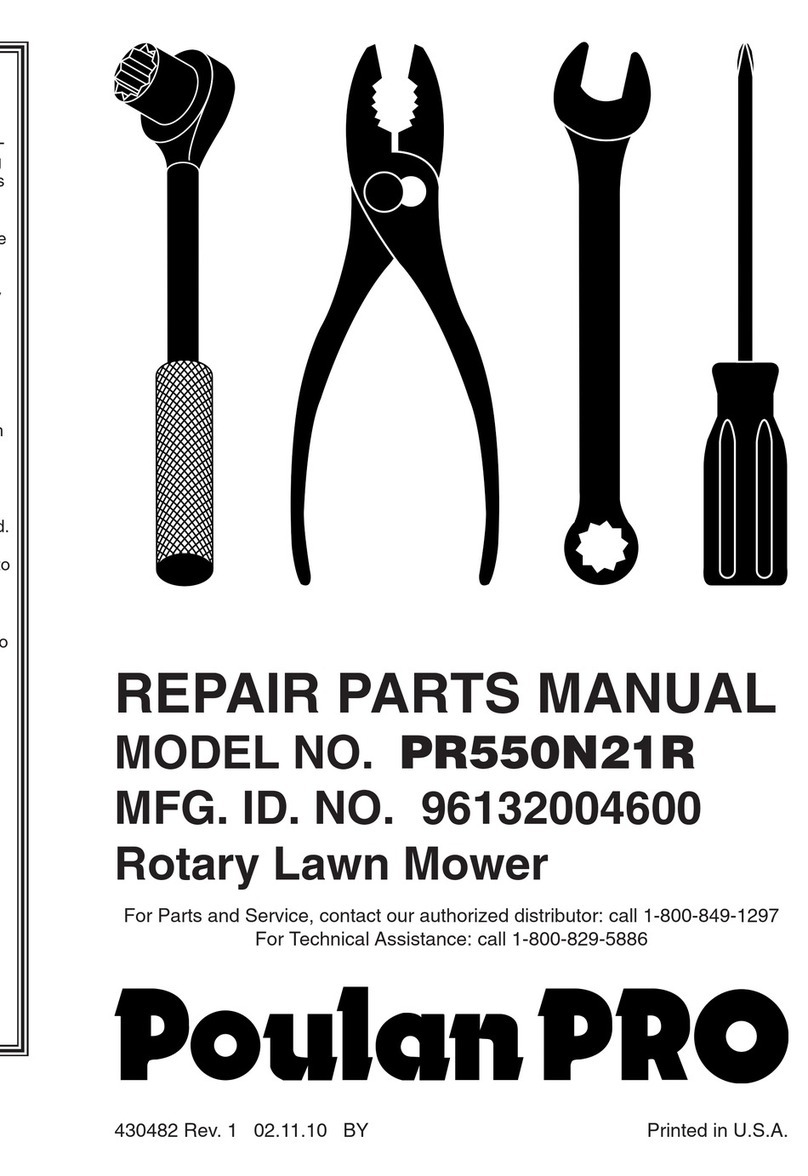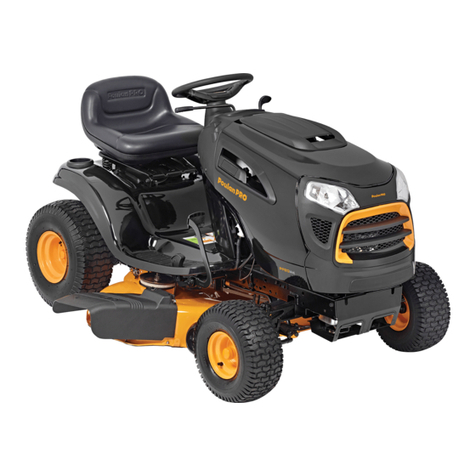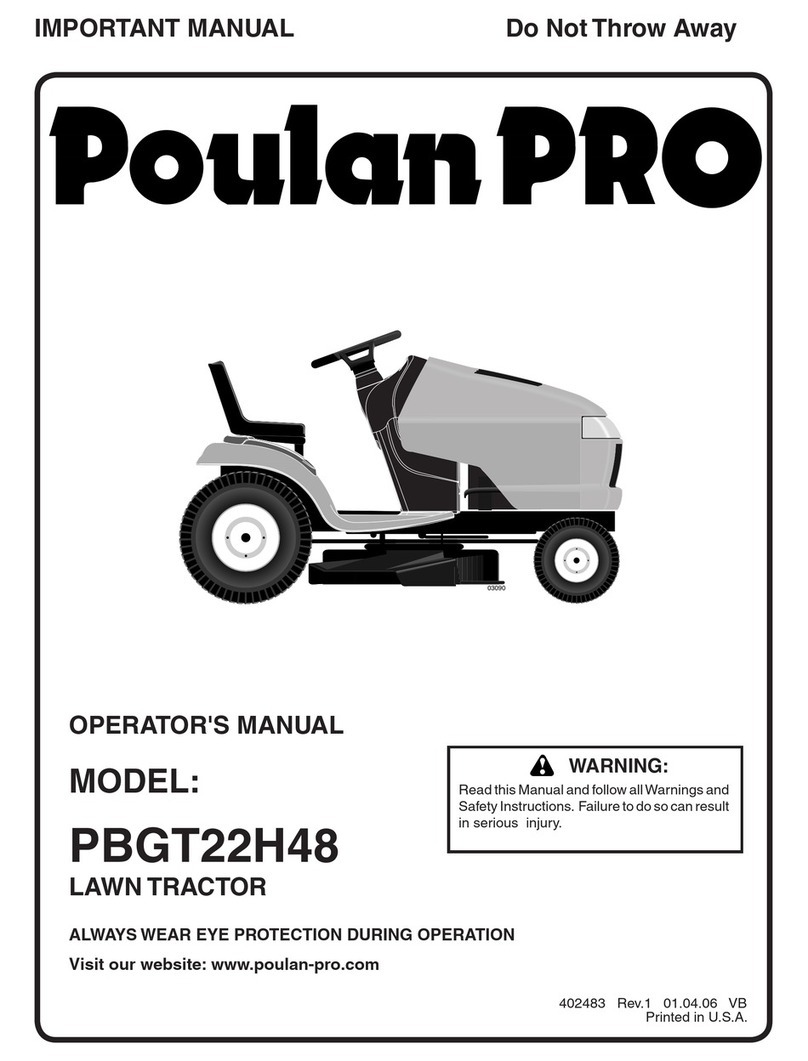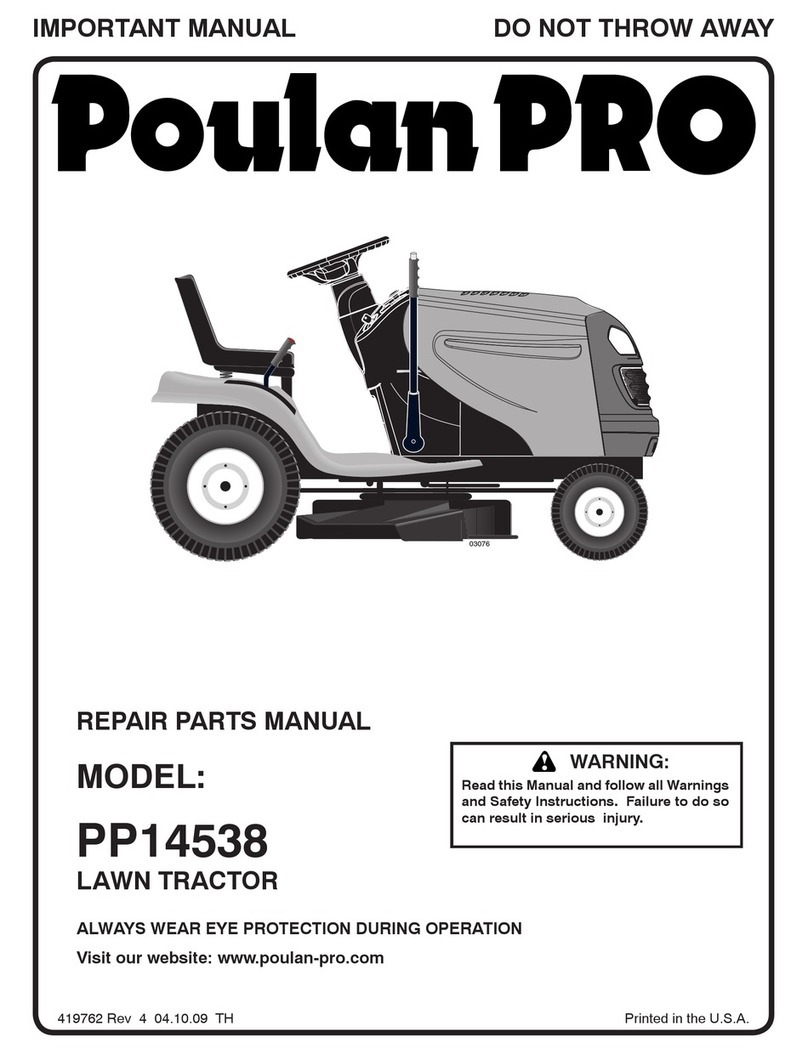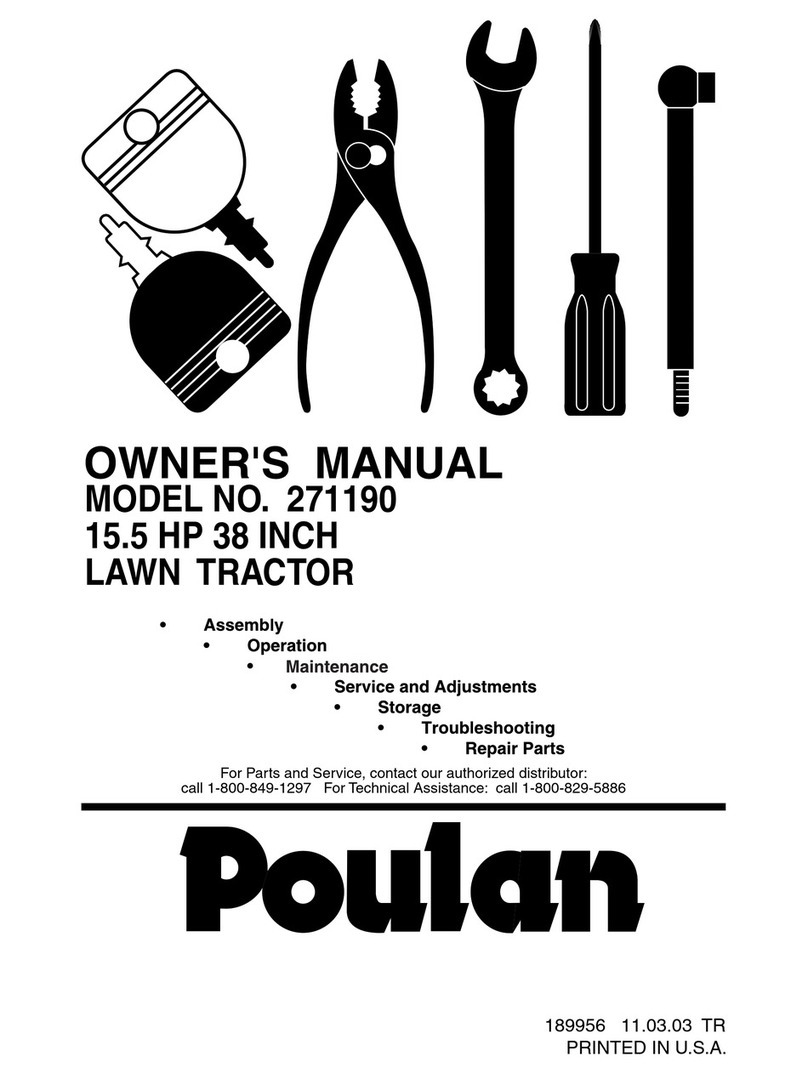SAFETY RULES
IMPORTANT: THIS CUTTING MACHINE IS CAPABLEOFAMPUTATING HANDSAND FEETAND THROWINGOBJECTS. FAILURE
TO OBSERVETHE FOLLOWING SAFETY INSTRUCTIONSCOULD RESULTIN SERIOUS INJURYOR DEATH.
I. GENERAL OPERATION
• Read, understand, and follow all instructions in the
manual and on the machine before starting.
• Only allow responsible adults, who are familiar with the
instructions, to operate the machine.
Clearthe area of objects such as rocks, toys, wire, etc.,
which could be picked up and thrown by the blade.
Be sure the area is clear of other people before mow-
ing. Stop machine if anyone enters the area.
• Never carry passengers.
• Do not mow in reverse unless absolutely necessary.
Always look down and behind before and while back-
ing.
• Be aware of the mower discharge direction and do not
point it at anyone. Do not operate the mower without
either the entire grass catcher or the guard in place.
• Slow down before turning.
• Never leave a running machine unattended. Always
turn off blades, set parking brake, stop engine, and
remove keys before dismounting.
• Turn off blades when not mowing.
• Stop engine before removing grass catcher or un-
clogging chute.
•Mow only in daylight or good artificial light.
• Do not operate the machine while under the influence
of alcohol ordrugs.
• Watch for traffic when operating near or crossing road-
ways.
• Use extra care when loading or unloading the machine
into a trailer or truck.
• Data indicates that operators, age 60 years and above,
are involved in a large percentage of riding mower-re-
lated injuries. These operators should evaluate their
ability to operate the riding mower safely enough to
protect themselves and others from serious injury.
• Keep machine free of grass, leaves or other debris
build-up which can touch hot exhaust /engine parts
and burn. Do not allow the mower deck to plow leaves
or other debris which can cause build-up to occur.
Clean any oil or fuel spillage before operating or
storing the machine. Allow machine to cool before
storage.
II. SLOPE OPERATION
Slopesare a majorfactorrelated to loss-of-control and tipover
accidents,whichcanresult insevereinjuryor death. Allslopes
requireextracaution. Ifyoucannotbackup theslopeor if you
f_eluneasyonit, donotmowit.
DO:
•Mow up and down slopes, not across.
•Remove obstacles such as rocks, tree limbs, etc.
•Watch for holes, ruts, or bumps. Uneven terrain could
overturn the machine. Taflgrass can hide obstacles.
•Use slow speed. Choose a low gear so that you will
not have to stop or shift while on the slope.
•Followthe manufacturer's recommendations forwheel
weights or countenNeights to improve stability.
•Use extracare withgrasscatchers orotherattachments.
These can change the stability of the machine.
•Keep all movement on the slopes slow and gradual.
Do not make sudden changes in speed or direction.
•Avoid starting or stopping on a slope. Iftires lose trac-
tion, disengage the blades and proceed slowlystraight
down the slope.
DO NOT:
•Do not turn on slopes unless necessary, and then,
turn slowly and gradually downhill, ifpossible.
•Do not mow near drop-offs, ditches, or embankments.
The mower could suddenly turn over if a wheel is over
the edge of a cliff or ditch, or if an edge caves in.
•Do not mow on wet grass. Reduced traction could
cause sliding.
•Donottrytostabilizethemachinebyputtingyourfoot
on the ground.
Do not use grass catcher on steep slopes.
III. CHILDREN
Tragic accidents can occur if the operator is not alert to
the presence of children. Children are often attracted to
the machine and the mowing activity. Never assume that
children will remain where you last saw them.
• Keep children out of the mowing area and under the
watchful care of another responsible adult.
• Be alert and turn machine off if children enter the
area.
• Before and when backing, look behind and down for
small children.
• Never carry children. They may falloff and be seriously
injured or interfere with safe machine operation.
• Never allow children to operate the machine.
• Use extra care when approaching blind corners, shrubs,
trees, or other objectsthat may obscure vision.
IV. SERVICE
Use extra care in handling gasoline and other fuels.
They are flammable and vapors are explosive.
- Use only an approved container.
- Never remove gas cap or add fuel with the engine
running. Allow engine to cool before refueling. Do
not smoke.
- Never refuel the machine indoors.
- Never store the machine orfuelcontainer inside where
there is an open flame, such as a water heater.
• Never run a machine inside a closed area.
• Keep nuts and bolts, especially blade attachment bolts,
tight and keep equipment in good condition.
• Never tamper with safety devices. Check their proper
operation regularly.
• Keep machine free of grass, leaves, or other debris
build-up. Clean oil or fuel spillage. Allow machine to
cool before storing.
• Stop and inspect the equipment if you strike an object.
Repair, if necessary, before restarting.
• Never make adjustments or repairs with the engine
running.
• Grass catcher components are subject to wear, dam-
age, and deterioration, which could expose moving
parts or allow objects to be thrown. Frequently check
components and replace with manufacturer's recom-
mended parts, when necessary.
• Mower blades are sharp and can cut. Wrap the blade(s)
or wear gloves, and use extra caution when servicing
them.
• Check brake operation frequently. Adjust and service
as required.
2
